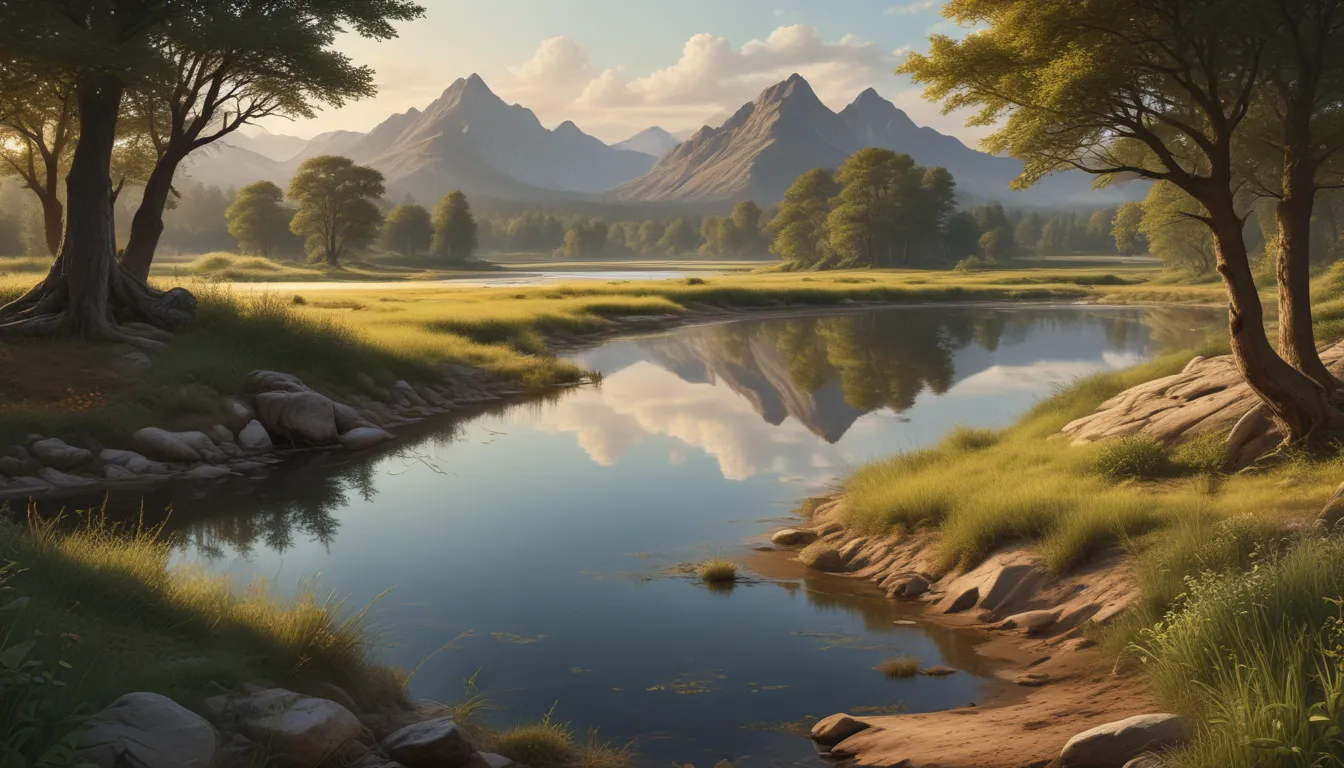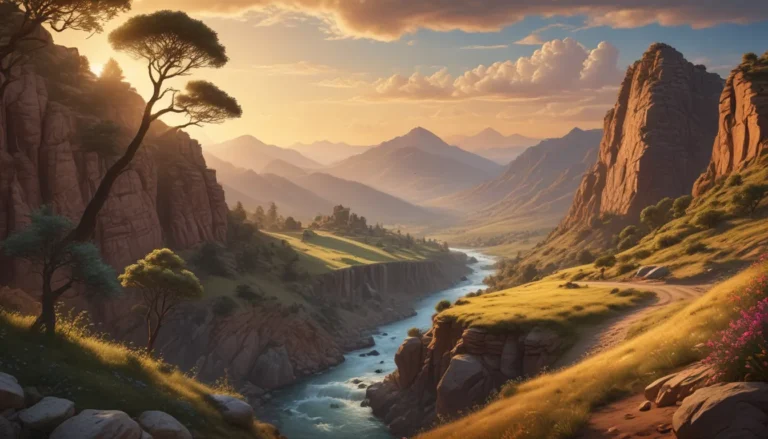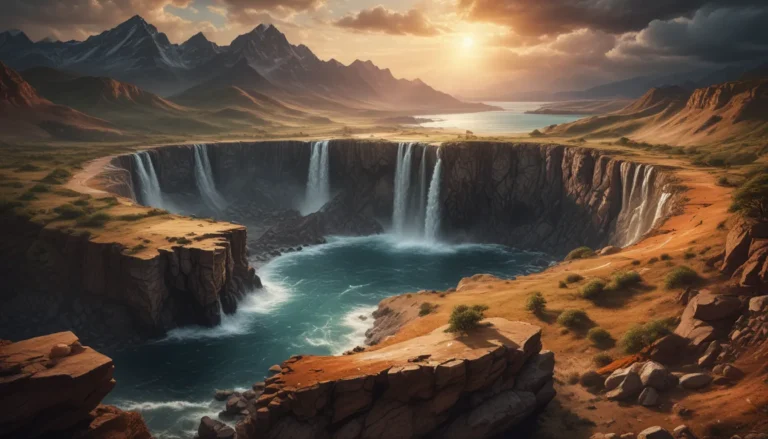A Note About Images: The images used in our articles are for illustration purposes only and may not exactly match the content. They are meant to engage readers, but the text should be relied upon for accurate information.
Oxbow lakes are truly one of nature’s wonders, showcasing the power of water and the ever-changing nature of our planet. These horseshoe-shaped water bodies hold secrets of our planet’s history and provide unique habitats for diverse species. In this article, we will delve into the enigmatic charm of oxbow lakes and uncover eight intriguing facts about these captivating geographical features. Join us on a journey to explore the formation, ecological significance, and cultural importance of oxbow lakes as we unravel the mysteries that lie beneath the surface.
A Twisted Tale of Formation
Oxbow lakes, also known as meander cutoffs, are created through a fascinating natural process. When a river bends or meanders, the outer curve of the bend erodes more than the inner curve due to greater water flow. Over time, this erosion causes the river to straighten, leaving behind a horseshoe-shaped or U-shaped lake. The unwavering power of water and the dynamic nature of our planet are beautifully illustrated through the formation of these unique water bodies.
Nature’s Hidden Battlegrounds
While oxbow lakes may appear tranquil on the surface, they often serve as battlegrounds for various species fighting for survival. The isolated nature of these lakes allows for the development of unique ecosystems, attracting diverse plant and animal species. Exploring the secrets within oxbow lakes reveals the interconnectedness of life and the delicate balance of nature at play.
A Snapshot of Our Planet’s History
The formation of oxbow lakes provides valuable insights into the geological history of our planet. Layers of sediment build up at the bottom of these lakes over time, capturing a historical record of the surrounding landscape. By studying these sediment layers, scientists can gain a deeper understanding of past climates, vegetation, and even the presence of ancient civilizations that once thrived along these ancient river paths.
Nature’s Breeding Grounds
Oxbow lakes play a crucial role in the reproductive cycle of many aquatic species. The stagnant water and abundance of vegetation make these lakes ideal habitats for fish, turtles, and waterfowl during breeding season. These lakes become vibrant nurseries, teeming with life as the young hatch and begin their journey into the world.
Ever-Changing Masterpieces
Despite their formation, oxbow lakes continue to evolve over time. Natural processes such as sedimentation and erosion gradually reshape their contours, altering their appearance and transforming their shape. Witnessing the ever-changing nature of these lakes serves as a humbling reminder of the forces that shape our world.
Cultural Significance
Throughout history, oxbow lakes have held cultural significance for many civilizations. Revered as sacred sites and places of spiritual importance, these lakes have provided water sources, fertile land for agriculture, and inspiration for artistic expressions. The stories and legends surrounding oxbow lakes continue to captivate and inspire us today.
A Haven for Outdoor Enthusiasts
Oxbow lakes offer outdoor enthusiasts a variety of recreational activities to enjoy. From boating and fishing to birdwatching and photography, these natural wonders provide a tranquil escape from everyday life. Exploring the serene beauty of oxbow lakes allows us to reconnect with nature and appreciate the world’s simplicity and magnificence.
A Glimpse into the Future
Studying oxbow lakes becomes even more crucial in the face of climate change. These dynamic ecosystems serve as indicators of environmental health, offering valuable insights into the effects of human activity on our planet. By understanding the changes within oxbow lakes, scientists can better predict and mitigate the potential consequences of ongoing environmental shifts.
FAQs About Oxbow Lakes
- How are oxbow lakes formed?
-
Oxbow lakes are formed through the process of meandering, where rivers curve and loop over time, leading to the formation of a narrow neck of land between two bends. When the river changes its course, a U-shaped lake known as an oxbow lake is created.
-
What is the significance of oxbow lakes?
-
Oxbow lakes are crucial for maintaining the health and biodiversity of surrounding ecosystems. They provide habitats for various plants and animals, act as water sources for wildlife, and aid in flood control and sediment deposition.
-
Where can oxbow lakes be found?
-
Oxbow lakes can be found in regions with meandering rivers across the world. Some well-known locations include the Mississippi River in the United States, the Amazon River in South America, and the Mekong River in Southeast Asia.
-
How long does it take for an oxbow lake to form?
-
The formation of an oxbow lake can take several years or even decades, depending on factors like river flow speed, erosion, deposition, and the landscape’s geological characteristics.
-
Can oxbow lakes change over time?
-
Yes, oxbow lakes are subject to changes in size, shape, and even disappearance due to natural processes such as sedimentation, erosion, and shifts in the river’s course.
-
Are there recreational activities associated with oxbow lakes?
- Yes, oxbow lakes offer recreational activities such as fishing, boating, birdwatching, and hiking, allowing people to explore unique landscapes and observe diverse wildlife.
Oxbow lakes are not just geological formations; they are windows into the intricate workings of our planet. By exploring these enigmatic features, we gain a deeper appreciation for the dynamic forces that shape our world and the delicate balance of nature that sustains life. Let the mysteries of oxbow lakes inspire you to marvel at the hidden wonders of our planet and consider the profound impact of our actions on the environment.






